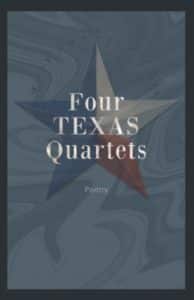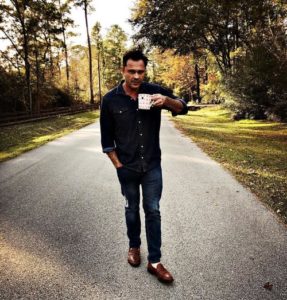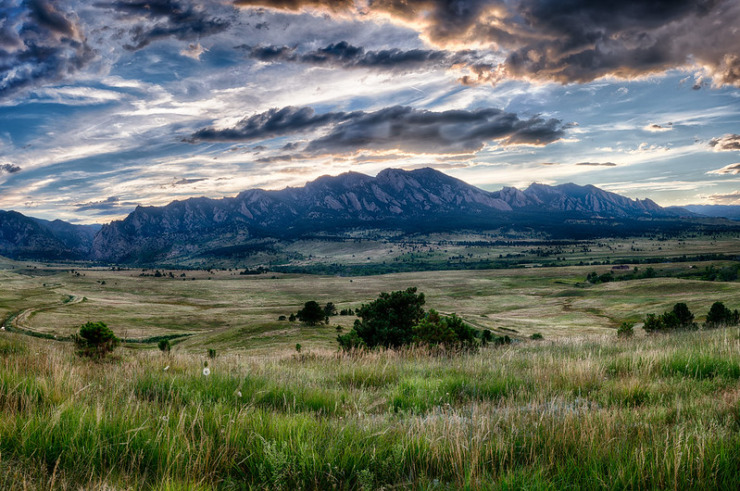Mark Johnson Cole loves the poetry of T.S. Eliot. And he loves his state of Texas. And while undoubtedly many Texans share a love of Eliot’s poetry, Cole may have done something unique. He married Eliot’s Four Quartets and Texas history and current events to create Four Texas Quartets. In a time when poetry is being revitalized on Instagram, when novels are being written in poetic form, and collections and even Poetry Magazine often mash up poetry with art and photographs, Four Texas Quartets is a creative standout.
A native Oklahoman but reared in Texas and currently living near Houston, Cole holds seven degrees. He’s been a working attorney and a local government official. He studied German and then philosophy in graduate school. He studied law and theology in New England, Germany, Liechtenstein, London, and the Midwest.
Over time, he says, he discovered that philosophy was becoming less personally important and poetry becoming more so. He discovered the poetry and prose of Eliot and the importance of “his thought in the history of the culture of the West.” And from there he began to study writers like John Graves, Wendell Berry, J. Frank Dobie, and Larry McMurtry.

I lived in Texas for almost six years back in the 1970s, and I was surprised by how much I remembered and recognized when reading these quartets, and how in my own limited experience with the state I could see the truth of what Cole has written. Texas made a large impact on me and my wife; consider that both of my children have Texas names.
He begins with Sam Houston, a larger-than-life character who was governor of two states (Tennessee and Texas), moved to what is now Oklahoma to help the Cherokee tribe after its forced transportation to the territory, lived with a Cherokee woman, was tried before the House of Representatives for attacking a congressman, became the first president of the Republic of Texas and then the first governor, and was removed from his office by the Texas legislature for refusing to support secession, although his son fought for the Confederacy. If there is any individual who might symbolize Texas, it’s Sam Houston – controversial, brawling, compassionate, outrageous, contradictory, and more.
From “Steamboat House,” Four Texas Quartets
So when on your ten-hour highway pilgrimage to see
That 60,000 square foot gun range in Midland
You enter a hotel room sized toilet stall
While 100 pumps refuel massive SUVs outside
Remember that there are reasons why
The King Ranch is larger than Rhode Island
That Beaumont is home to the world’s largest fire hydrant
AS cyclops’ giant sculptured eye watches downtown Dallas
And that Amarillo has both a 72-ounce steak
And a 24-inch wide cheeseburger.
Amarillo also has Cadillac Ranch, a sculptural exhibition of 10 Cadillacs buried nose down in a field, supposedly at the angle of the Great Pyramid in Egypt or the angle at which the Titanic sunk, depending upon which account you might believe. It’s likely both.
If the history and culture of Texas is about anything, Coles suggests, it’s the idea of personal freedom. And it’s less a story that unfolds in a well-ordered and inevitable chronology and more one of ongoing struggles, with gains and losses on both sides of the issue, but mostly gains. And those gains are often accompanied by physical movement.

Mark Johnson Cole
Perceptions once taken become memories
Then the processing begins
Your memories meld with others in ceremony and dance
Or collision random encounters and jumbles
Conversations liturgy, pie fights letters
Novels scrums banquets skirmishes sucker punches
Out of these bubbling cauldrons
Shared mythologies, songs and tales rise
Until they expire and fall unrenewed by the wayside
And that is when your load up your
Remaining possessions and cart them
To the other side of the tracks
Then keep going one way or the other
To the city
Or to the country
Or back again
Your freedom-journey grail-quest continues
Four Texas Quartets is a mythology of the state of Texas cast in the form and often the language of T.S. Eliot. It’s a hymn of praise to a state, and a state of mind, that sees both the strengths and the flaws and how they are often two aspects of the same substance. Cole has written Texas its well-deserved love letter.
Photo by Max and Dee, Creative Commons, via Flickr. Post by Glynn Young.
How to Read a Poem uses images like the mouse, the hive, the switch (from the Billy Collins poem)—to guide readers into new ways of understanding poems. Anthology included.
“I require all our incoming poetry students—in the MFA I direct—to buy and read this book.”
—Jeanetta Calhoun Mish
- Poets and Poems: Sandra Marchetti and “Diorama” - April 24, 2025
- Poets and Poems: Christina Cook and “Roaming the Labyrinth” - April 22, 2025
- Longfellow’s “Paul Revere’s Ride”: Creating a National Legend - April 17, 2025


Megan Willome says
I’m in. Love that cover! And an epigram from “Lonesome Dove”? What else, I ask you!
Glynn says
An epic poetic work for an epic state!